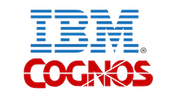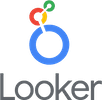Handling data is challenging in this era in this era of digital transformation. Keeping track of all the bits, bytes and scraps of data strewn across an enterprise—and beyond—is a daunting task. Understanding what exactly is taking place and tracking performance at any given moment is critical for maximum business success.
Dashboards aim to deliver the deep visibility that today’s organizations require. Dashboards display data from a source or various sources—business analytics, ERP and CRM systems, security software and IT hardware, for example—to deliver a useful and visually compelling summary in the form of charts, graphs and reports that illuminate events.
Among other things, dashboard software makes it easier to spot and track trends, keep an eye on metrics and key performance indicators (KPIs) and identity important issues before they emerge as full-fledged problems. They can also aid in storytelling and collaboration. In most dashboard software, users can drill down for more detailed information and data.
Many dashboard tools deliver real-time data 24/7. Like the dashboard in a car or airplane, they provide an at-a-glance view of data. However, unlike dashboards in vehicles, many platforms allow for a high level of customization and include robust communication and collaboration features. They also offer notifications and alerts. The goal is to deliver pertinent and actionable information.
JUMP TO SECTION:
- Domo
- IBM Cognos
- iDashboards
- Looker
- Microsoft Power BI
- Qlik Sense
- Tableau
- ThoughtSpot
- Yellowfin
- Zoho
- Dashboard Comparison Chart
- How to Choose the Best Dashboard Software
- Dashboard Software Use Cases
- Common Features of Dashboard Tools
- Benefits of Dashboard Software
Also see: Top Digital Transformation Companies
Top 10 Dashboard Software
Domo
Key Insight
Domo delivers highly customizable dashboards that “tell a story with real-time data.” This includes interactive and dynamic dashboards that connect to real-time data and automate reporting tasks. The underlying platform focuses on BI as a self-service. This means that teams can use the platform to quickly build secure dashboards for various purposes. Domo supports collaboration and accommodates data apps that deliver visualizations in many styles and formats.
Pros
- Delivers a no-code environment for creating dashboards.
- Offers a vast array of connectors, data apps and templates for building dashboards and rich visualizations.
Cons
- The interface can be challenging, and it is not as user friendly as other platforms.
- Some users complain that the platform is too expensive.
IBM Cognos
Key Insight
Data scientists, line of business users and others turn to Cognos to meet sophisticated BI, analytics and AI needs. Groups can build sophisticated dashboards using a drag-and-drop interface. Further customizations are possible through coding. Cognos dashboards are highly interactive. Cognos allows users to auto-generate visualizations with the ability to drill down for more granular view of data. The platform supports a vast array of charts, graphs, heatmaps and other visualizations.
Pros
- Built-in Watson AI functionality supports sophisticated dashboards and dynamic visualizations, which extend to mobile devices.
- The platform delivers strong collaborative and sharing features, including via email and Slack.
Cons
- Cognos can be difficult to use. Setting up effective dashboards may require considerable time and resources.
- Some users complain that the user interface and usability doesn’t match other solutions, and dashboards lag behind others.
Also see: Real Time Data Management Trends
iDashboards
Key Insight
This platform’s strength is its ability to pull data from numerous sources to produce custom dashboards. It supports more than 160 data sources and formats through a built-in ETL tool. Yet iDashboards is equally adept at displaying dashboards on virtually any device, including servers, tablets and smartphones. A high level of flexibility means that an organization can build interactive dashboards to address nearly any situation or need—and make them available to a wide array of users. The platform includes strong role-based permission controls and excellent governance features.
Pros
- Drag-and-drop design and no coding approach make it easy to use.
- Provides templates and solutions designed for specific industries and tasks, including finance, project management, operations management, sales, IT and call centers.
Cons
- Lacks high end features and capabilities found in more expensive platforms.
- Struggles with large volumes of data and doesn’t offer as diverse array of visualizations as competitors.
Looker
Key Insight
This cloud-based business intelligence (BI) and analytics platform, part of Google, delivers a rich and flexible dashboard experience. This includes interactive and dynamic dashboards, or Looks, with custom visualizations, and an ability to drill down into data. Looker dashboards can display data for specific individuals, functions and groups, based on filters. The product accommodates an array of plug-ins that generate heatmaps, bar, charts, graphs, collapsible trees, histograms and even cartoon visualizations.
Pros
- Few platforms match the visual appeal of Looker. It creates outstanding dashboards and visualizations, which can be highly interactive.
- The powerful yet user-friendly platform relies on drag and drop elements to produce dashboards.
Cons
- Users complain that the platform makes advanced formula creation too difficult, and APIs can present challenges.
- Errors and null values frequently appear in dashboards. This may necessitate the use of more stringent process checks.
Also see: Top Business Intelligence Software
Microsoft Power BI
Key Insight
Microsoft Power BI delivers powerful analytics with strong support for dashboards. It’s possible to build visualizations and dashboards using Microsoft tools, such as Excel, as well as outside data sources. The platform, which runs in Azure Cloud, allows users to easily connect Excel queries, data models, and reports to Power BI Dashboards. There are also strong AI and automation features that assist in building business dashboards and delivering the right information at the right time.
Pros
- The highly scalable and powerful platform is an ideal fit for organizations with a strong reliance on Microsoft Office and other Microsoft applications.
- The drag-and-drop interface is ideal for business users and other non-data scientists.
Cons
- Dashboards and visualizations aren’t as attractive as other vendors.
- Some users find the learning curve steep and complain that the platform isn’t at times user friendly.
Also see: Top Data Mining Tools
Qlik Sense
Key Insight
Qlik is an innovator in the BI and analytics space. The Qlik Sense platform supports visual data discovery that extends to business users, who can build charts, graphs, maps and other self-service visualizations. It supports active analytics through AI. Qlik Sense dynamic dashboards work across platforms and on mobile devices. The platform also supports rich reporting and offers strong collaboration tools, including exports to Microsoft Office and PDF.
Pros
- Strong self-service tools and capabilities and a clean but powerful interface make it a popular choice for business users.
- Supports a wide range of data visualizations with support for legacy and cloud data across numerous sources and platforms.
Cons
- Some users complain about slow load speeds and performance issues.
- Can involve a steep learning curve and involve configuration challenges, particularly in the admin management realm.
Tableau
Key Insight
Visualizations and dashboards are at the heart of Tableau. The strength of the platform, which is part of Salesforce, is that it connects to virtually any data source, including legacy formats and delivers a wealth of visualizations. Yet, Tableau Creator also includes powerful AI and ML features that generate insights via dynamic dashboards. The platform is designed for non-data scientists, though it provides powerful features for more technical users. All of this makes it a great choice for Salesforce CRM users but also numerous other groups.
Pros
- Advanced AI functionality integrated into CRM delivers contextual insights and recommendations.
- Highly flexible, with support for cloud and on-premises frameworks. Works across almost every computing platform, and on mobile devices.
Cons
- The platform is expensive compared to other vendors.
- Steep learning curve and an interface that isn’t always intuitive.
Also see: Best Data Analytics Tools
ThoughtSpot
Key Insight
The company bills itself as a modern analytics cloud and claims that dashboards are not the point. Essentially, ThoughtSpot aims to take analytics to a more granular and individual level, including embedding charts, graphs and other visualizations into apps. This makes it possible to aggregate, manage and expose data in meaningful and sometimes powerful ways. The no code environment makes it appealing to business users, though the platform is capable of more advanced data science tasks. It includes links to numerous data sources and includes AI augmented analytics.
Pros
- An intuitive interface and strong but easy-to-understand functionality make it a popular choice for many organizations.
- A high level of flexibility for visualizations and reporting, including embedding live analytics in apps.
Cons
- Some user complaints about slow performance on large datasets.
- Using advanced functionality can be challenging and require significant customizations.
Yellowfin
Key Insight
Yellowfin focuses on solving complex data problems through automation, data storytelling and collaborations. Action-based dashboards are at the center of the platform. They deliver rich and attractive visualizations via connections to numerous data sources. Building dashboards is a straightforward task. A drag-and-drop interface that connects to an interactive dashboard gallery delivers a high level of flexibility for tapping contextual data.
Pros
- Yellowfin is easier to use than many competitors, yet it delivers rich and powerful dashboards.
- Delivers advanced interactive storytelling features.
Cons
- Can be pricey.
- Some users complain that formatting and customization can be challenging.
Zoho
Key Insight
One thing that makes Zoho appealing is ease of use. Building visualizations and dashboards is a simple and straightforward task. The platform offers an extensive ecosystem of apps that are designed for sales and marketing, finance, IT management, customer service and more. A self-service BI and analytics platform delivers interactive dashboards that accommodate augmented analytics, embedded BI, data storytelling and more.
Pros
- Integrates data from more than 250 sources, including cloud services and Web URL feeds.
- Powerful analytics and dashboard features at a lower cost point than many competitors.
Cons
- The user interface is not as modern and attractive as other vendors.
- Numerous user complaints about subpar customer and technical support.
Dashboard Comparison Chart
| Vendor | Key Product | Differentiators |
| Domo | Domo | No code, supports numerous data sources |
| IBM | Cognos | Strong AI and collaboration features |
| iDashboards | iDashboards | Intuitive and easy-to-use interface; no code; flexible |
| Looker | Visually appealing; highly interactive dashboards | |
| Microsoft | Power BI | Highly scalable and flexible; familiar Microsoft drag-and-drop interface |
| Qlik | Qlik Sense | Excellent self-service features; supports numerous types of dashboards and visualizations |
| Tableau | Tableau Creator | Unsurpassed visuals; excellent functionality that works across platforms and devices |
| ThoughtSpot | ThoughtSpot | Intuitive interface; highly flexible, with strong support for live analytics |
| Yellowfin | Enterprise Analytics | Intuitive interface; low code/no code; powerful features; strong storytelling with visually appealing dashboards |
| Zoho | Enterprise | Strong data integration; powerful analytics and dashboard features |
How to Choose the Best Dashboard Software
Like any tech initiative, it’s wise to thoroughly review your organization’s desires, needs and requirements, understand the systems or technology the dashboard software will run on, and how the dashboard tool can add value. In some cases, enterprises benefit from making IT changes, such as moving to the cloud or swapping out some tools and applications downstream, in order to take full advantage of data and what a dashboard system can deliver.
Specifically, look for the following:
- Is the dashboard geared toward ease of use or toward a robust performance? You’ll need more experts on staff for higher end software.
- To what extent will this dashboard interoperate with your existing analytics infrastructure? Remember, the best dashboard provides a global view, so it needs to be a good fit with your current solutions.
- Dashboard software is evolving rapidly, as is the practice of data analytics. Will your potential dashboard vendor work with you, providing ongoing support and updates? Will they incorporate feedback?
Dashboard Software Use Cases
Dashboard software comes in many shapes and forms. In some cases, hardware and software vendors include predesigned dashboards with their products. Yet in today’s increasingly complex IT and business environment, it’s often necessary to use more elaborate data analytics tools that can scrape or ingest data from multiple sources and provide a more complete view.
For example, a financial software program might display a snapshot view of current assets and accounts. However, it could be necessary to pull some or all of this data into an ERP program or environmental, social and corporate governance (ESG) software so that an organization can understand things in a broader context, such as how a sustainability effort is advancing, for example.
Indeed, dashboard software now extends across a wide variety of functions and domains. It help groups understand operational and strategic issues better, so that they can take the appropriate actions. This includes: management, sales, marketing, finance, procurement, IT, security, ESG, human resources, and service and support functions.
Vendors also offer templates and applets that support the needs of specific industries, such as healthcare, manufacturing, retail, agriculture, digital media and energy. In addition, some provide specialized dashboard tools designed for platforms like LinkedIn, Twitter, Facebook, Google Analytics, Salesforce, ServiceNow and Zendesk.
Of course, many organizations create custom dashboards to address more specific needs.
Common Features of Dashboard Tools
Modern dashboard software offers an array of features and capabilities that enhance information and allow organizations to act on it. Virtually all allow some level of customization. This means that you can select the criteria you want to view, determine how, when and where you see it, and how it appears on your screen.
For instance, you might want to view a heat map for sales or a pie chart for revenue. You might want to see security incidents in context with threats. Or your enterprise may want to track its progress on reducing carbon emissions or meeting diversity hiring goals. There’s virtual no limit to the way most dashboard tools can be customized and what data they use.
Customization choices often include dashboard themes and colors. In fact, many tools offer preset templates. It’s also common for packages to offer styling options for fonts, colors, charts and text. Still another option is pre-set groups of KPIs—frequently tied to industries, functions or tasks—which an organization can use straight out of the box or customize.
Some dashboards also offer widgets, which can be dragged to others dashboard sections to create more advanced and linked capabilities. In addition to widget linking, some packages offer time interval widgets that introduce more advanced functionality, such as time interval models that deliver visibility into data based on a time scale. The user can view it on a daily, weekly, or monthly basis compared to the original display period.
Similarly, many dashboard tools allow users to tap libraries or apps stores with charts and graphs, including adding additional input points or axis. Other top features include collaborative tools and sharing functions, the ability to share actual dashboard data and samples rather than merely views, and embedded analytics that can be used at a website or in a separate app or program.
Finally, a growing number of dashboards include machine learning (ML) and artificial intelligence (AI) functionality. These make it possible to adapt and tweak models—and specific criteria—based on changes to the marketplace or business, and deliver notifications based on specific factors or criteria.
Benefits of Dashboard Software
Dashboard software delivers both tangible and intangible benefits. As organizations look to compete more effectively—and innovate at scale—having the right data available is nothing less than critical. With a dashboard, it’s possible to monitor a business or system in a way that humans cannot—or in a way that wouldn’t be cost or time effective. This agility and flexibility supports the rapid decision-making that’s required by today’s enterprises.
Yet, dashboard tools also help workers focus on goals, objectives and other key criteria. By putting important data in front of them on a regular basis, it’s possible to introduce a common language or theme for discussions, team-building and other projects. For this reason, collaboration and sharing capabilities are crucial. An unfettered, easy-to-use but powerful interface is at the center of a successful dashboard.
Types of Dashboard Software
As organizations look to gain deeper and broader views of information, it’s also important to ensure that the dashboard software addresses specific needs that extend beyond departments or industry. These include things like analytical, operational and strategic objectives, which can be linked to other data and dashboards. By identifying KPIs and embedding them in a dashboard, an enterprise can see whether it’s on course or veering in the wrong direction.
It’s also important to consider how the dashboard tool will be used. Some systems reside only on a server or dedicated system, others are available through the cloud. If your organization plans to share information, it’s also important to understand whether the dashboard and data will work with particular platforms, such as Macs or Linux systems. Finally, in today’s highly mobile world, it’s important to know whether tablet and smartphone users can access dashboards and, if so, whether they will use a dedicated app or a mobile web browser.
Also see: Top AI Software










